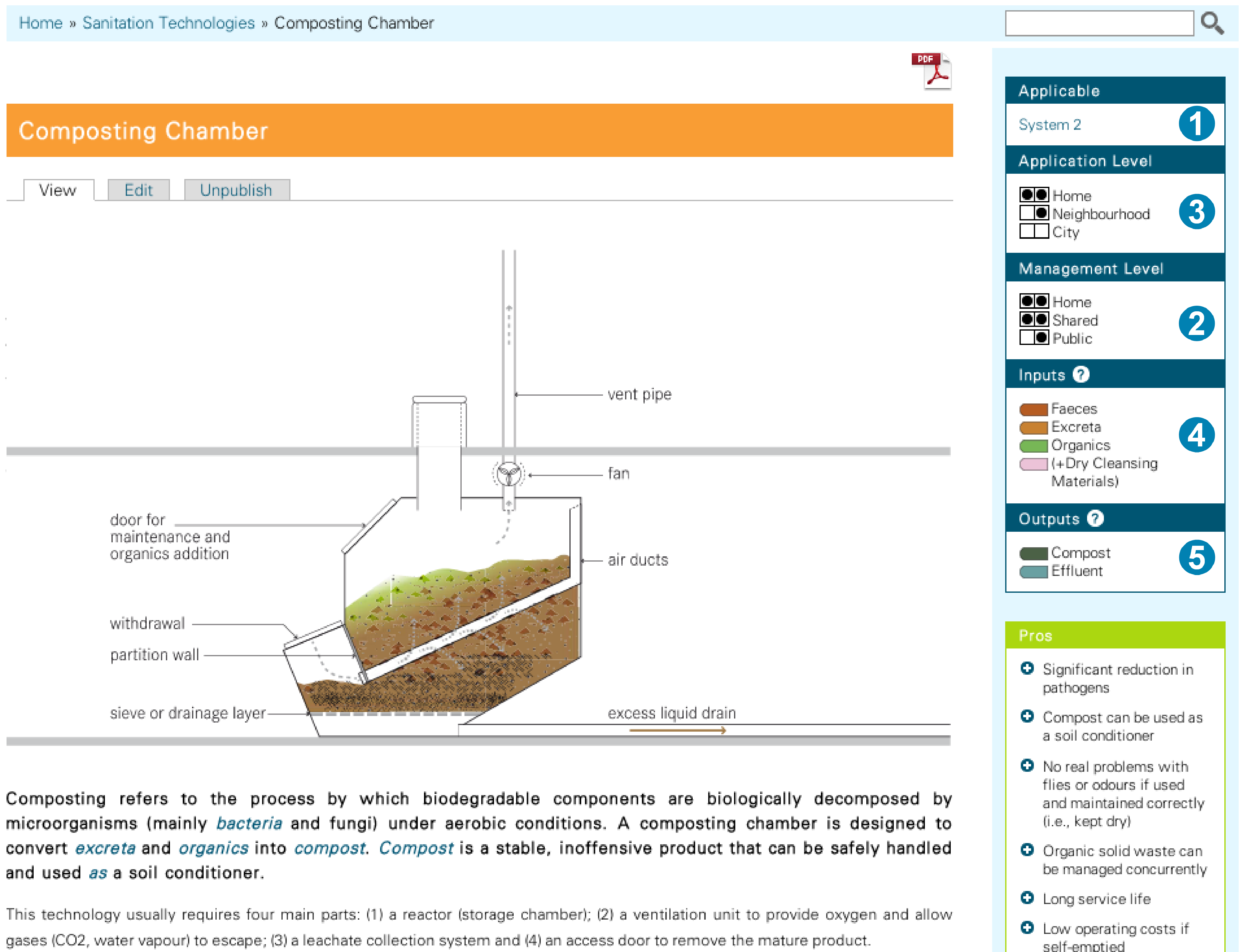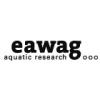
The summary table in the upper right corner of each technology information sheet contains the following information:

Applicable to System 2. This indicates in which system template the technology can be found. The Composting Chamber, for example, can be found (and only found) in System 2. Other technologies may be applicable to more tan one system.
Application Level. Three spatial levels are defined under this heading:
- Household implies that the technology is appropriate for one or several households.
- Neighbourhood means that the technology is appropriate for anywhere between several and several hundred households.
- City implies that the technology is appropriate at the city-wide level (either one unit for the whole city, or many units for different parts of the city).
Black dots are used to indicate how appropriate each level is for the given technology:
![]()
![]()
two dots means suitable,
![]()
one dot means less suitable, and
no dot means not suitable.
It is up to the eCompendium user to decide on the appropriate level for the specific situation that he/she is working on. The Application Level graphic is only meant to be a rough guide to be used in the preliminary planning stage.
The technologies within the functional group User Interface do not include an Application Level since they can only service a limited number of people.
Management Level describes the organizational style best used for the operation and maintenance (O&M) of the given technology:
- Household implies that the household, e.g., the family, is responsible for all O&M.
- Shared means that a group of users (e.g., at a school, a community-based organization, or market vendors) handles the O&M by ensuring that a person or a committee is responsible for it on behalf of all users. Shared facilities are defined by the fact that the community of users decides who is allowed to use the facility and what their responsibilities are; it is a self-defined group of users.
- Public implies institutional or government run facilities, and all O&M is assumed by the agency operating the facility. Usually, only users who can pay for the service are permitted to use public facilities.
The Composting Chamber in this example can be managed by all three styles, even though it is less suitable for public installations.
The technologies in the functional group User Interface do not include a Management Level since maintenance is dependent on the subsequent technologies, and not simply on the User Interface.
Inputs refers to the products that flow into the given technology.
The icons shown without parentheses are the regular inputs that will typically go into a technology. For some technologies, these products represent alternatives or options (possibilities) of which not all are necessary. Hence, the regular icons represent the mandatory products or choice of mandatory main products.
Products in parentheses () are additional (optional) products that may or may not be used or occur as input products, depending on the design or context.
Where a product occurs mixed with another product, this is indicated by the plus +. The product following the + is mixed with the preceding product(s). In other words: both of the products on either side of the + are included in the given technology and are mixed together.
In this exmple, Excreta or Faeces (if the Urine-Diverting Dry Toilet (UDDT) is used as User Interface) and Organics are the main products that can be processed by the Composting Chamber. Dry Cleansing Materials may also be included (the parentheses indicate that this is an additional, optional input in case the users are wipers and biodegradable Dry Cleansing Materials are used). Dry Cleansing Materials are not separated from Excreta or Faeces at the User Interface and, therefore, enter the Composting Chamber along with the previous products (indicated by the +). Anal Cleansing Water must not be discharged into the Composting Chamber; therefore, it is not listed.
Outputs refers to the products that flow out of the given technology.
The icons shown without parentheses are the regular outputs that typically come out of a technology.
Products in parentheses () are additional (optional) products that may or may not occur as output products, depending on the design or context.
When these products occur mixed with another product, this is indicated by the plus +. The product following the + is mixed with the preceding product(s). In other words: both of the products on either side of the + emanate from the given technology in a mixed form.
In this example, the Composting Chamber produces two separate products: Compost and Effluent (leachate).


